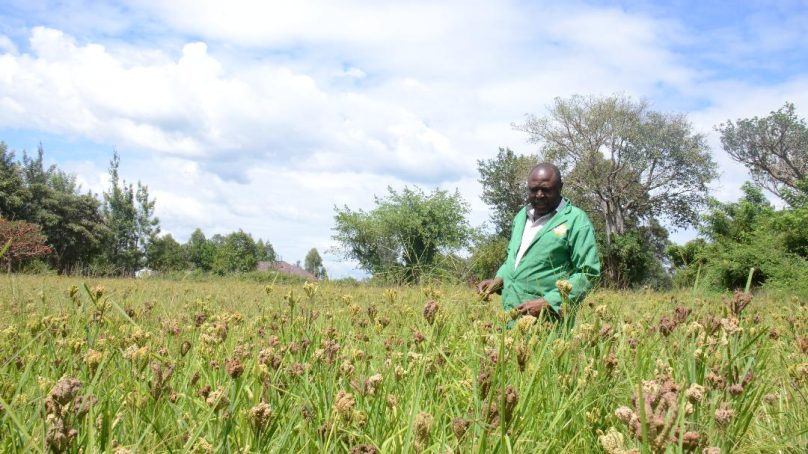
‘Primitive’ crops resurface in Migori County as Kenya’s Lake Victoria basin fends off high lifestyle diseases incidence
Kenya is in a rush to bring back on the dinner table indigenous foods that had receded almost into the oblivion as exotic species colonised kitchens and farmlands as consumers craved for fast-foods.
With lifestyle diseases linked to poor nutrition, a realisation that indigenous foods can keep the likes of cancer, diabetes and hypertension at bay or delay their onset has set off a scramble for the once-ignored foods as the crops resurface on farmlands around the country.
This is the case in Migori County, which despite having a high potential for production of a variety of indigenous crops to fend off high lifestyle disease incidence. The potential, however, is not being exploited and agricultural, economists and dieticians experts are raising concern.
The experts say farmers in the region have not fully tapped the high income potential provided by millet, cassava, sorghum, groundnuts, banana, sweet potatoes, sun-flower, soya beans, passion fruits and indigenous vegetables. In contrast with other regions in the country, farmers in Migori County lag behind in diversifying to indigenous food and cash-crop cultivation.
Instead, they have stuck on maize, tobacco and sugarcane farming, rather than venture into indigenous food and cash crop cultivation that were in generations gone-by the mainstay of local economies and food supply.
From early 2005, attempts to interest local farmers to embrace cultivation of the drought and disease- resistant crops have all hit a snag with farmers, swayed by the love for the western diets ignoring indigenous foods.
One-time coordinator at a non-governmental organization, ActionAid Lucas Mosenda Chacha, says he tried to interest local farmers into switching from over-reliance on maize and tobacco farming in Kuria County to indigenous crops but his efforts fell flat as he was mocked as a vain dreamer.
Chacha, now a County Executive Committee (CEC) member for agriculture in Migori County, had all the resources from ActionAid to change the dynamics of food and cash crop farming in the area but the local people ignored his campaign to take up indigenous African food and cash crops.
The official says h spent loads of money to buy farmers seeds for sunflower, Langstroth beehives; took farmers to seminars and workshops and even organised tours for farmers to other parts of the country, to no avail.
While the region’s farmers have stuck to growing foreign crops, the dilemma at the moment is the emergence of many diseases and pests that have compromised production of the Western-developed food and cash crop touted as high-value.
“The end result has been an acute food shortage of food and a surge in lifestyle diseases blamed on exotic foods,” Chacha explains.
Migori County Government Senior Nutritionists Caroline Odete says it is important that people eat more indigenous foods like ugali made from millet, sorghum and cassava flours or a mix of all these served with a host of indigenous vegetables.
It is unfortunate that most of these foods are not served in many eateries frequented by the young people in the County and in Kenya as a whole. The young generation today would not differentiate between millet and sorghum and would out rightly dismiss ugali made from the crops as sludge.
Health experts credit these food crops with helping people lead a healthy lifestyle because ingredient such as vitamins and minerals a human body needs to function optimally.
“These crops have been proven medically to work towards reducing of body weight, BMI and high blood pressure. Additionally, millet is low in calories compared to rice, making them an excellent choice for reducing calorie intake and achieving weight loss objectives,” Odete said during an interview with KNA.
Versatile and diverse, millet grains are used in many foods around the world, including flatbread, porridge, drinks, bread and more. Millet is also used to brew alcohol. But faced with challenges that come with climate change and soil exhaustion caused by mono-cropping, Migori is now experiencing low food production. The crops cultivated currently in the county are not hardy enough to resist the extreme weather swings like indigenous crops that can withstand these weather vicissitudes.
According to Kenya Agricultural and Livestock Research (KALRO), it is estimated that Kenya produces less than 100,000 metric tonnes of sorghum, millet and cassava every year. The Food and Agriculture Organisation (FAO) also ranks Kenya low worldwide in sorghum, millet and cassava production.
Chacha says local people despise cultivation of millet, sorghum and cassava, perceiving the crops as backward or primitive. The younger generation does not embrace brown ugali made from sorghum, millet and cassava and perceive them as crops for the older generation.
“The current generation of farmers feels the crops have no place among the highly loved food and cash crops in the modern day, hence the low acceptability in Migori, and Kenya in general.
However, as from last year, there have been some positive signs that local farmers are now gradually embracing the crops and the number of consumers has been on rise.
Agricultural extension field officers have been training farmers and registering them for free seed subsidies as means of promoting cultivation of indigenous food and cash crops in the region. So far, the region has seen increase in acreage under cassava, millet and sorghum.
Mr Peter Olengo, says he has so far cultivated five acres of sorghum, courtesy of a multimillion county programme to jumpstart traditional crop cultivation. Like Olengo, Mrs Truphosa Otieno, from Rongo Sub-County, has also been growing millet on her two-acre farm, an activity that earns her a good income.
“What I have earned from my farm is encouraging and I want many to delve into millet growing which is a reliable venture for good income,” she says.
- A Tell Media / KNA report / By George Agimba







